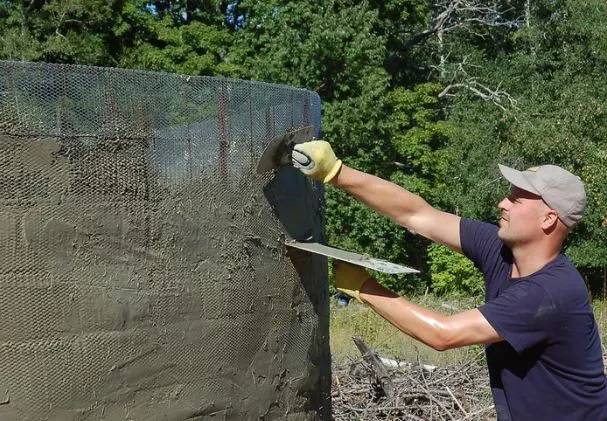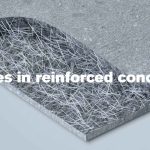Cracking behavior and crack patterns of ferrocement is more or less similar to reinforced concrete with some differences. Cracks, in ferrocement, at service load are very fine so that are not visible from naked eye and cracks in ferrocement are very small but large in numbers. Crack propagation is not sudden as it is in reinforced concrete. Progressive cracking behavior is dependent on reinforcement type and number of mesh layers. When chicken mesh is used, after first crack, mesh deviate from linearity. With increase in numbers of mesh layers, crack arresting mechanism is better and crack width decreases with increase in number of mesh layers. Specific surface of reinforcement do not have strong relation with cracking behavior. Average crack width in bending has relation with tensile strain developed in extreme mesh layer and wire spacing of the mesh.
Flexural Cracks
When ferrocement panels are tested under four point flexure loading, cracks started appearing at mid of panel i.e. pure flexural tension zone. At failure in zone of shear very few cracks appear. It means panels failed predominately in flexure. Crack propagation is very low in ferrocement because cracking load is immediately transferred into reinforcement. Crack width does not increase by increasing the load applied until stabilization stress is developed. Once the stabilization stress is developed, width of cracks start increasing.
Shear Cracks
Two types of inclined cracks are developed in ferrocement; flexure-shear cracks and web shear cracks . In ferrocement, crack spaces are much smaller than RCC this make it more ductile material. Nonstructural cracks may also develop due to movement of formwork, shrinkage, internal cracks due to internal heat of hydration or thermal stresses etc. Structural cracks in ferrocement develop due to stress concentration, creep, foundation settlement, fire, earthquake, fatigue, vibration, overloading, etc.. Cracks may also appear due to corrosion of reinforcement. Repairing of cracking zone in cover coat due to temperature and drying shrinkage is not required but cracks appeared due to overloading i.e. structural cracks should be repaired.



Comments are closed